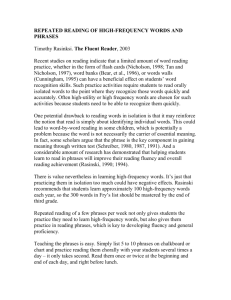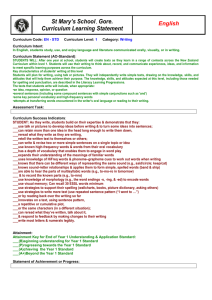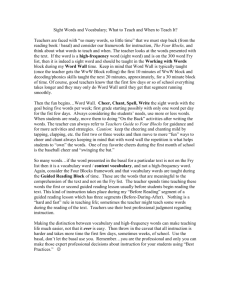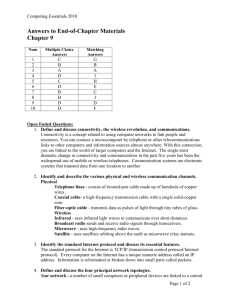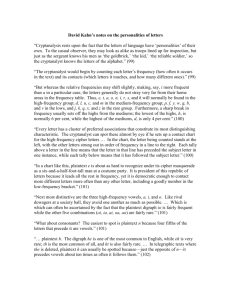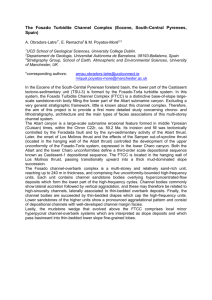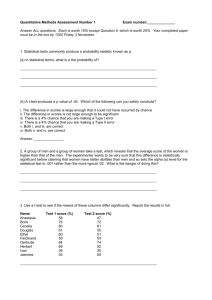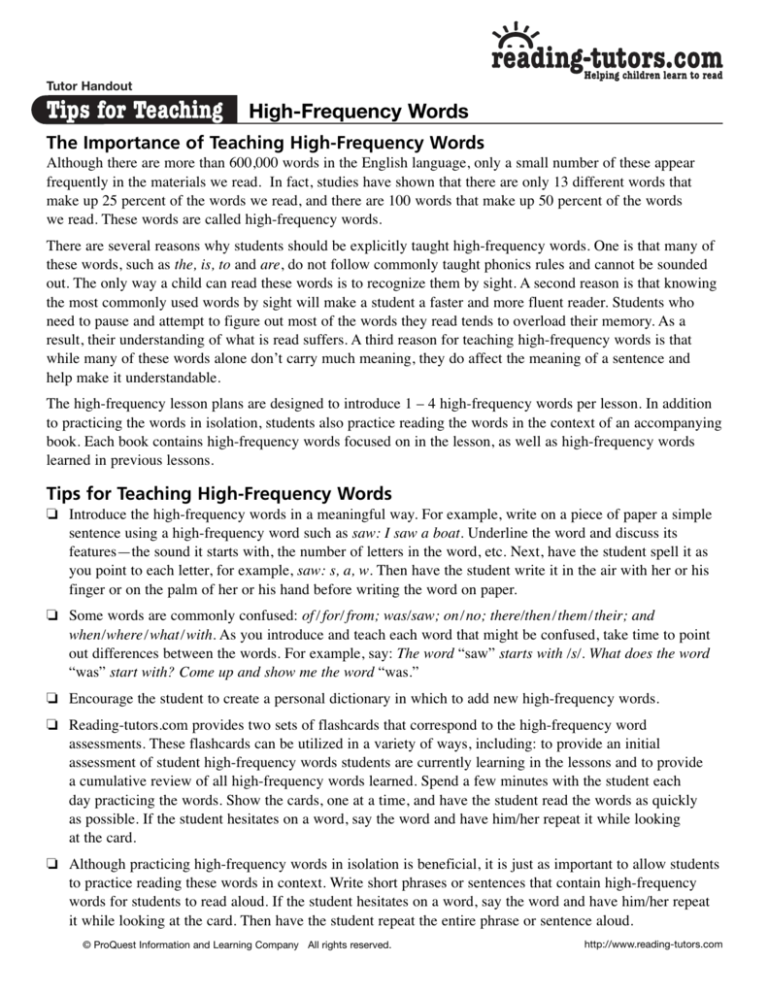
Tutor Handout
Tips for Teaching
High-Frequency Words
The Importance of Teaching High-Frequency Words
Although there are more than 600,000 words in the English language, only a small number of these appear
frequently in the materials we read. In fact, studies have shown that there are only 13 different words that
make up 25 percent of the words we read, and there are 100 words that make up 50 percent of the words
we read. These words are called high-frequency words.
There are several reasons why students should be explicitly taught high-frequency words. One is that many of
these words, such as the, is, to and are, do not follow commonly taught phonics rules and cannot be sounded
out. The only way a child can read these words is to recognize them by sight. A second reason is that knowing
the most commonly used words by sight will make a student a faster and more fluent reader. Students who
need to pause and attempt to figure out most of the words they read tends to overload their memory. As a
result, their understanding of what is read suffers. A third reason for teaching high-frequency words is that
while many of these words alone don’t carry much meaning, they do affect the meaning of a sentence and
help make it understandable.
The high-frequency lesson plans are designed to introduce 1 – 4 high-frequency words per lesson. In addition
to practicing the words in isolation, students also practice reading the words in the context of an accompanying
book. Each book contains high-frequency words focused on in the lesson, as well as high-frequency words
learned in previous lessons.
Tips for Teaching High-Frequency Words
❏ Introduce the high-frequency words in a meaningful way. For example, write on a piece of paper a simple
sentence using a high-frequency word such as saw: I saw a boat. Underline the word and discuss its
features—the sound it starts with, the number of letters in the word, etc. Next, have the student spell it as
you point to each letter, for example, saw: s, a, w. Then have the student write it in the air with her or his
finger or on the palm of her or his hand before writing the word on paper.
❏ Some words are commonly confused: of / for/ from; was/saw; on/no; there/then/them/their; and
when/where / what/with. As you introduce and teach each word that might be confused, take time to point
out differences between the words. For example, say: The word “saw” starts with /s/. What does the word
“was” start with? Come up and show me the word “was.”
❏ Encourage the student to create a personal dictionary in which to add new high-frequency words.
❏ Reading-tutors.com provides two sets of flashcards that correspond to the high-frequency word
assessments. These flashcards can be utilized in a variety of ways, including: to provide an initial
assessment of student high-frequency words students are currently learning in the lessons and to provide
a cumulative review of all high-frequency words learned. Spend a few minutes with the student each
day practicing the words. Show the cards, one at a time, and have the student read the words as quickly
as possible. If the student hesitates on a word, say the word and have him/her repeat it while looking
at the card.
❏ Although practicing high-frequency words in isolation is beneficial, it is just as important to allow students
to practice reading these words in context. Write short phrases or sentences that contain high-frequency
words for students to read aloud. If the student hesitates on a word, say the word and have him/her repeat
it while looking at the card. Then have the student repeat the entire phrase or sentence aloud.
© ProQuest Information and Learning Company All rights reserved.
http://www.reading-tutors.com
Tutor Handout
Tips for Teaching
High-Frequency Words
(continued)
❏ Challenge a student to use a word in a sentence. Increase the challenge by having her or him create
a sentence that uses two, three, or more high-frequency words.
❏ There are different games that the student can play with the word cards while practicing the words:
1. Line up several word cards on a desk or tabletop. Say one of the words then have the student point to
the word and remove it from the row. Repeat the activity with another word. Praise correct responses.
2. Laying the words on a desk or tabletop, provide some clues to a word and have the student find the
word, for example: This word starts with /v/ and rhymes with merry (very).
3. Use a flashlight to highlight one of the words in a group of high-frequency words spread out on
a desk or tabletop. Have the student read the word. Then give the student the flashlight and have her
or him highlight a word for you to read.
4. Make high-frequency words using letter cards. Have the student close her or his eyes while you
remove one of the letters. Have the student open her or his eyes and tell you the letter that is missing.
5. Place several high-frequency word cards on a desk or tabletop. Challenge the student to use as many
words as she or he can use in one sentence. Have the student take the cards as the words are used in
a sentence.
6. Write on a piece of paper a sentence using several high-frequency words. Read the sentence with the
student as you point to each word. Then have the student cover her or his eyes while you cover one of
the words. Have the student read the sentence and tell you what word is missing. Add the word and
have the student read the sentence again to check. Alternatively, write the words on cards and have
the student hold up the card that shows the missing word in the sentence.
7. Place several flash cards face down in a stack. Have the student draw the cards and read them as fast
as she or he can. You can time the student and encourage her or him to read them as fast as possible.
You might want to help the student make a graph to record the child’s time over a period of several
days.
8. Place the cards face down in a stack. Have the student draw a card, read the word, then roll a dice.
If correct, the student can move along a game board. Reading-tutors.com provides game boards
and numbered game cards for practice.
9. Make two sets of the flash cards and spread them face down on a table. Have the student turn over
two cards, read the words, and tell whether the words are the same. If the words are the same,
the student can keep the words.
10. Place a flash card on the table. Give the student some letter cards and have her or him make the
word using the letter cards.
11. Give the student a set of flash cards. Have the student arrange the words in alphabetical order then
read the words.
12. Using a set of flash cards, have the student put the words into groups, for example, according to the
first letter, the last letter, the number of letters in the words, etc. Once the student has made the groups,
have her or him read the words in each grouping.
© ProQuest Information and Learning Company All rights reserved.
http://www.reading-tutors.com

